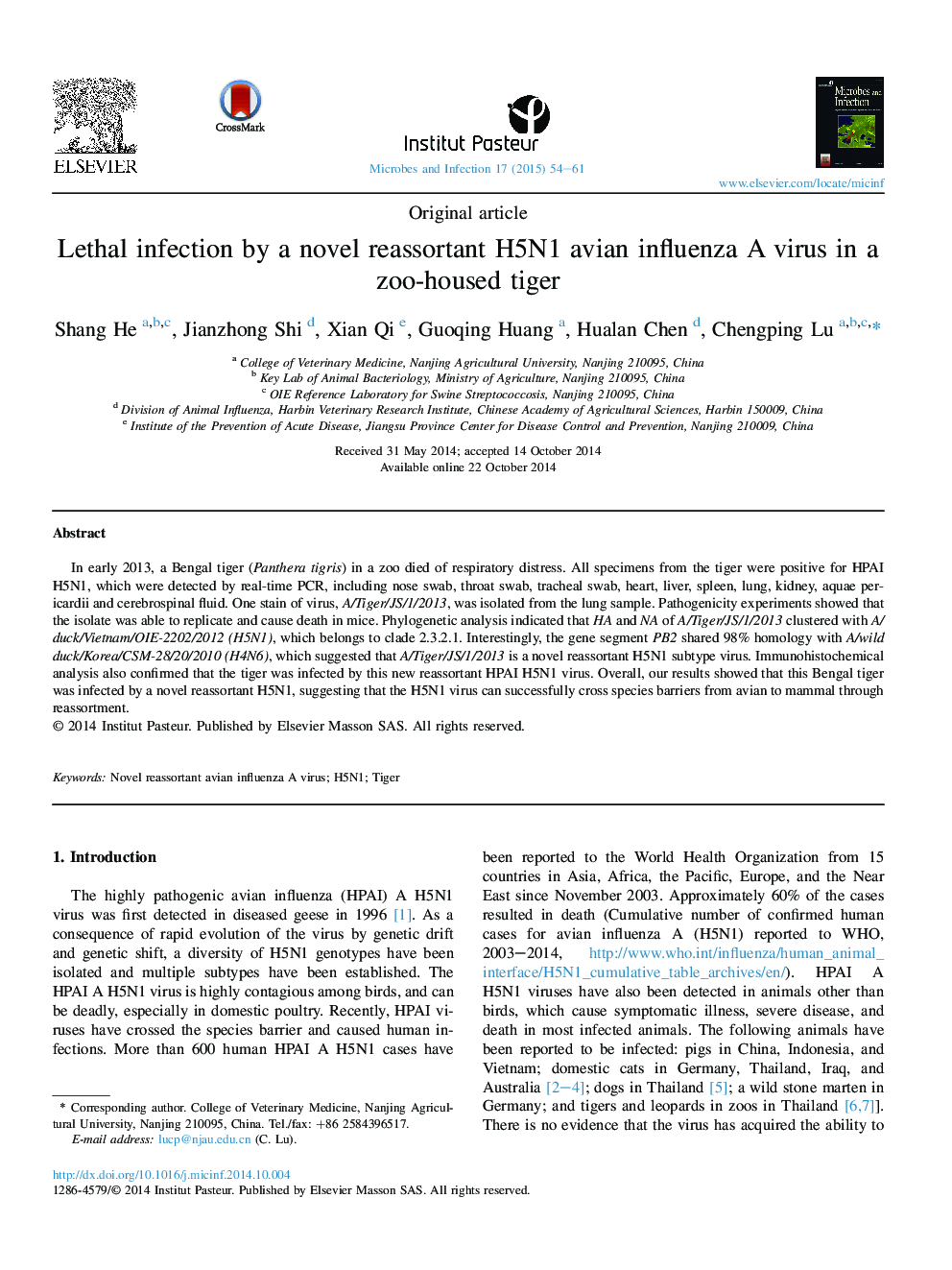| Article ID | Journal | Published Year | Pages | File Type |
|---|---|---|---|---|
| 3414709 | Microbes and Infection | 2015 | 8 Pages |
In early 2013, a Bengal tiger (Panthera tigris) in a zoo died of respiratory distress. All specimens from the tiger were positive for HPAI H5N1, which were detected by real-time PCR, including nose swab, throat swab, tracheal swab, heart, liver, spleen, lung, kidney, aquae pericardii and cerebrospinal fluid. One stain of virus, A/Tiger/JS/1/2013, was isolated from the lung sample. Pathogenicity experiments showed that the isolate was able to replicate and cause death in mice. Phylogenetic analysis indicated that HA and NA of A/Tiger/JS/1/2013 clustered with A/duck/Vietnam/OIE-2202/2012 (H5N1), which belongs to clade 2.3.2.1. Interestingly, the gene segment PB2 shared 98% homology with A/wild duck/Korea/CSM-28/20/2010 (H4N6), which suggested that A/Tiger/JS/1/2013 is a novel reassortant H5N1 subtype virus. Immunohistochemical analysis also confirmed that the tiger was infected by this new reassortant HPAI H5N1 virus. Overall, our results showed that this Bengal tiger was infected by a novel reassortant H5N1, suggesting that the H5N1 virus can successfully cross species barriers from avian to mammal through reassortment.
